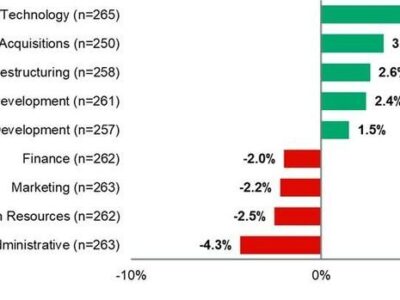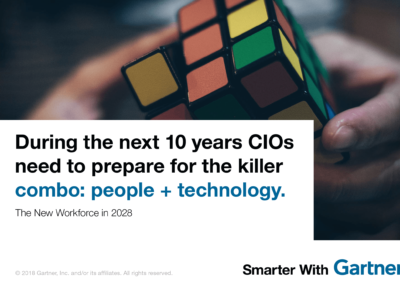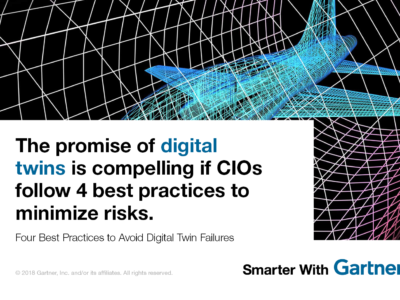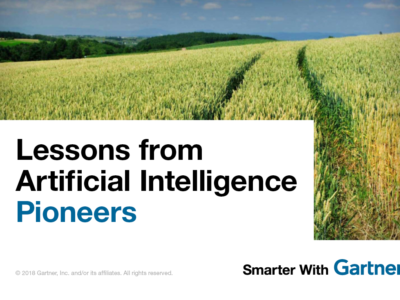What to do when you’re in charge of a whole new digital world.
In 2016, Toyota launched Toyota Connected in partnership with Microsoft, with the purpose of exploring the Internet of Things (IoT) and the connected car. The company named Zackery Hicks, the CIO of Toyota Motor North America, as CEO of the new venture. The appointment was a testament to the crucial role played by the leadership of Toyota’s IT organization in future technology endeavors. At Daimler Trucks North America, CIO Dieter Haban heads up the software behind part of its predictive maintenance system. And these companies are not unique.
According to Gartner, by 2020, more than 10% of new IoT products from traditional industries will be headed up by the CIO.
As IoT becomes more prevalent, the CIO — often the most “techie” person at the company — will be asked to step up and lead the effort. In fact, in a recent Gartner survey, almost one-third of responding organizations expected the CIO would be leading their IoT activities.
As an additional challenge, large companies are now competing with smaller startups in traditional industries when it comes to the IoT. For example, in the centuries-old door-lock market, industry giant Assa Abloy is facing competition from Silicon Valley startup August Home.
“CIOs are uniquely positioned to succeed in a product development role, as long as they equip themselves with the right knowledge, surround themselves with the right team, and work with others in the organization to set the appropriate goals and expectations,” said Mark Hung, research VP and lead analyst, IoT, at Gartner.
Understand the IoT product development cycle
CIOs leading the IoT product development charge will need to understand the IoT product development cycle. This cycle includes five stages: Requirements, Design, Development, Test, and Production and Support.
First, the team has to determine the requirements for what they need and define the architecture of the overall system and the major building blocks. During the development phase, the team will use the design (architecture) and the requirements phases to realize the IoT product. These phases are followed by four stages of testing: Feature testing, unit testing, integration testing and regression testing. The final step is production and support, during which the product undergoes a series of trials before shipment, including Alpha, Beta, Pilot and Volume production.
Find the team
Just as the end product will offer diverse uses, the team that creates the product must offer up diverse skills. Most IoT setups need to include hardware engineers, software engineers, customer support and external partners.
Hardware Engineers: IoT product development will require a range of skills, likely including wireless connectivity, which is a skill set generally found in system engineering and RF engineering groups.
Software Engineers: When it comes to IoT, product designers are responsible for much of the UX/UI, a key component of IoT success.
Customer Support: Much like the product and team, the customers for IoT devices will be diverse with diverse needs. Correctly implementing the support structure at scale is critical.
External Partners: Engaging a partner for the design or manufacturing is a common arrangement for IoT products. Decide what types of partners are needed and ensure you select one (or a few) who meet your needs.
Engage key stakeholders
IoT products are a risky proposition, so it’s key to have buy-in from other key stakeholders, including the CEO, CFO and CMO.
CEO: Set the proper expectations with the CEO for the product and the organization regarding the permanent or temporary status of the IOT product and the role of the CIO as it relates to the VP of engineering or other leaders.
CFO: The mindset surrounding IT is important when discussing IoT with the CFO. It’s vital that the CFO looks at IT as a revenue generator, not just a cost center.
CMO: Engage the CMO early and often for a successful IoT product. The key is to define clear goals and work together to ensure those broader goals are met.
IoT will open doors to new markets through new business models. Launching an IoT product presents major challenges, but with the right skill set, team and buy-in, CIOs are well-positioned for success.
Get Smarter
Leadership Hub
Visit the Gartner CIO Leadership hub for complimentary research and webinars.
Client Research
Gartner clients can read the full report titled The IoT Effect: When the CIO Becomes the Product Head.
Event
Learn more about CIO leadership and how to drive digital innovation to the core of your business at Gartner Symposium/ITxpo 2016. Follow news and updates from the events on Twitter using #GartnerSYM.











